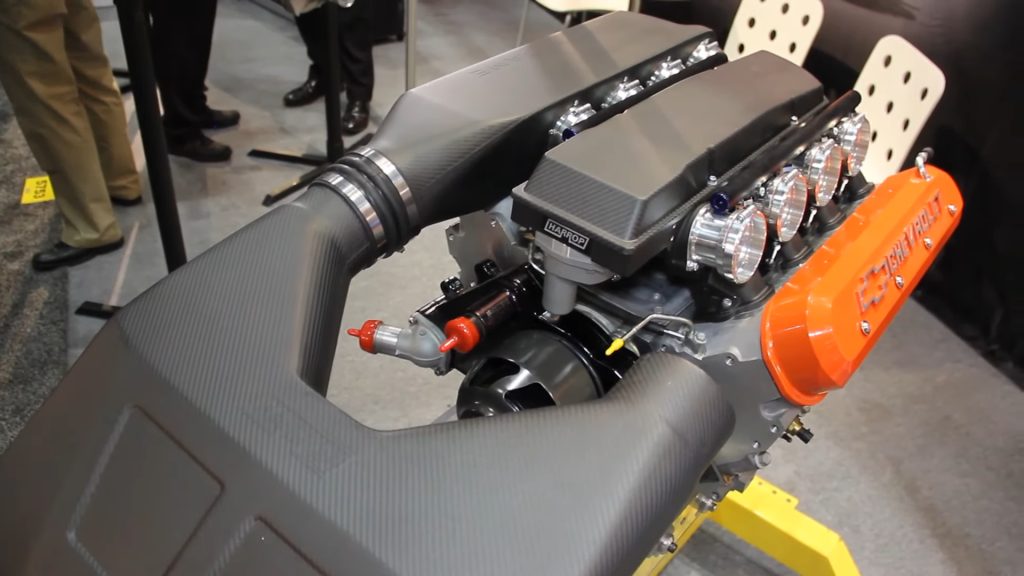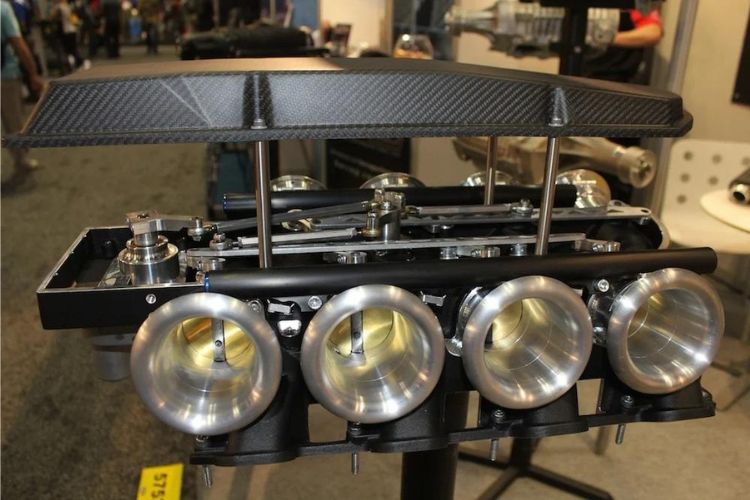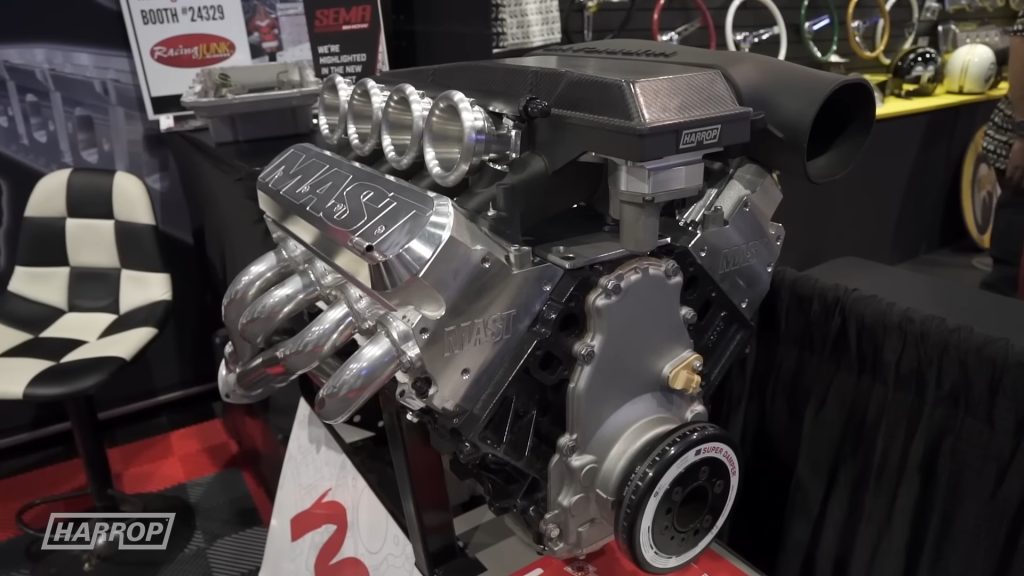Power and torque in internal combustion engines are directly proportionate with how much air the engine can take in. More air means more fuel and bigger bangs. Air is drawn into the engine through the air intake, cleansed through filters and distributed to the cylinder heads by the air intake manifold. Depending on the engine type, throttle bodies, carbs, injectors and spark plugs are involved in different ways (and at different stages) with mixing the air with fuel for combustion.
If you’re modifying your car, either for more low-end torque or high-end power and higher rev ranges, changing the engine manifold is often the first place to start. There are different designs, manifolds made of varying materials, and types to suit a wide range of rev ranges.
What is an Air Intake Manifold?

Source: youtube.com/@PowerPerformanceYouTube
The intake manifold is the engine component that distributes air to the cylinders. In carburetted engines, it connects the carburettor and cylinder head, while in fuel-injected engines it sits between the throttle body and cylinder head. The main purpose of the manifold in injected engines is to deliver high air volume and distribute that evenly between the cylinders. In older engines, the manifold distributes the air and fuel mix to the cylinders.
Parts and Construction
Manifolds consist of two basic parts – the plenum and the runners. The plenum is the large hollowed-out section at the top, connected either to the carb or throttle body. It redirects air to the runners underneath before air enters the cylinder head inlet valves. Tuners can size aftermarket inlet manifolds with larger capacity plenums, or change stock designs from single to split types (or vice versa) for more power and more efficient air distribution. A large role here is your car’s engine layout and the results you expect.
Runners carry air from the plenum to the inlet ports. In fuel-injected engines, runners also have slots that house the injectors, and fuel is injected just before the air reaches the intake valves. Carburetted engines, on the other hand, rely on fuel dispersed from the carb inside the manifold.
The different roles have also meant different materials. Older carb engines rely on cast-iron or lighter aluminium manifolds, while composites and plastics do an adequate job of pushing air along in injected engines.
Basic Functions of the Intake Manifold

Source: enginelabs.com
The air intake manifold does different things in different engine designs:
- Even distribution of air or intake charge to all cylinders – the manifold supplies an equal amount of air or the air and fuel mix to the cylinders.
- Fuel injection – in injected engines, fuel injectors are placed in the runners, and spray fuel pr ECU preset sequences and amounts that offer the best combustion efficiency.
- House vital sensors – the plenum and runners have slots for different sensors that measure air temperature, mass and density, and in turbocharged engines, boost pressure. The runners also house the runner position sensor that controls the opening and closing of the valve inside the manifold, and hence the amount of air that reaches the engine.
- Vacuum for various vehicle systems – vacuum is vital for the functioning of various car components, such as brake boosters, and openings in the manifold supply vacuum to these parts via hoses or piping.
Types and Formats
You can find two distinctive engine manifold types. Dual-plane manifolds have two sections split at the opening before the carburettor. This is usually in V6 and V8 engines. The design is common in muscle cars for street use and in mild racing uses. The manifold delivers power across a wider rev range (and from earlier on) but can fall short at higher engine speeds due to smaller plenum capacity.
Single-plane versions have a single opening in the plenum, with the carburettor connecting to the intake. Fuel from the carburettor enters the intake through one opening and is fed equally across all cylinders. With a larger plenum and no restrictions, this builds power from medium engine speeds but goes into higher revs (rounding at about 8000rpm). This is the design to look for when modifying your car for more power.
Variable-length manifolds have runners of different lengths. This design allows power to be spread across a wider rev range and from earlier on and mimics the effect of supercharging. Longer and narrower runners deal with low RPMs, while power delivery at higher revs is sorted with short and wide runners to reduce the distance the air needs to flow to reach the inlet valves. Some variable-length variants also include butterfly valves to open and close the air reaching the runners from the plenum. This manifold design is suited for racing and track use, as more air can be pushed at higher RPMs.
Other manifold designs include spread bore intakes, low and high-rise intakes and tunnel rams, with twin carbs. Choosing the right intake will be based on where in the power band you need the most power. Manufacturers make this easier with units sold as working at their optimum with a defined range. As a general rule, dual-plane types are mostly stock, but can but modified to a single-plane manifold if you’re looking for more push higher up and at higher speeds.
Final Considerations

Source: youtube.com/@HarropTV
When sourcing the part, also consider minor but crucial details. Look for manifolds that match water coolant ports to avoid overheating, vacuum ports and carb flange fitment for consistent operation, and clearance in the bonnet to ensure everything fits. Additionally, RPM changes mean you also need to get a performance cam that spins at the same speed, and with more spent gases, a wider-piped aftermarket exhaust to balance things out.

